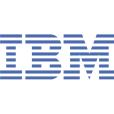 IBM (NYSE: IBM) announced it has developed a long-sought improvement to the transistor – the tiny on/off switch that serves as the basic building block of virtually all microchips made today.
IBM (NYSE: IBM) announced it has developed a long-sought improvement to the transistor – the tiny on/off switch that serves as the basic building block of virtually all microchips made today.Working with AMD and its other development partners Sony and Toshiba, the company has found a way to construct a critical part of the transistor with a new material, clearing a path toward chip circuitry that is smaller, faster and more power-efficient than previously thought possible. As important, the technology can be incorporated into existing chip manufacturing lines with minimal changes to tooling and processes, making it economically viable.
The achievement is expected to have widespread impact, leading to improvements in electronic systems of all kinds, from computers to consumer electronics. IBM has inserted the technology into its state-of-the-art semiconductor manufacturing line in East Fishkill, NY and will apply it to products with chip circuits as small as 45 nanometers (billionths of a meter) starting in 2008.
"Until now, the chip industry was facing a major roadblock in terms of how far we could push current technology," said Dr. T.C. Chen, vice president of Science and Technology, IBM Research. “After more than ten years of effort, we now have a way forward. With chip technology so pervasive in our everyday lives, this work will benefit people in many ways.”
The technology, called “high-k metal gate,” substitutes a new material into a critical portion of the transistor that controls its primary on/off switching function. The material provides superior electrical properties compared to its predecessor, enhancing the transistor’s function while also allowing the size of the transistor to be shrunk beyond limits being reached today.
As a result, the use of this material could allow the industry to continue on the path defined by “Moore’s Law,” the chip industry axiom that predicts a doubling of the number of transistors on a chip every 12-18 months, thereby allowing chip performance and function to increase as well. The semiconductor industry has been able to maintain this rate of improvement for decades, but was reaching the limits of current technology, threatening a slowdown in further advancements.
As important as the new material itself is the method for introducing it into current manufacturing techniques. The creation of this transistor component with the new material was accomplished by the IBM team without requiring major tooling or process changes in manufacturing – an essential element if the technology is to be economically viable.
Incremental work leading up to this achievement had been published earlier by IBM in scientific journals and presented at chip technology conferences. IBM plans to publish the summary of this final achievement in a similar forthcoming venue.
IBM Research Division
IBM Research is the world's largest information technology research organization, with about 3,000 scientists and engineers in eight labs in six countries. IBM has produced more research breakthroughs than any other company in the IT industry. For more information on IBM Research, visit http://www.research.ibm.com
No comments:
Post a Comment